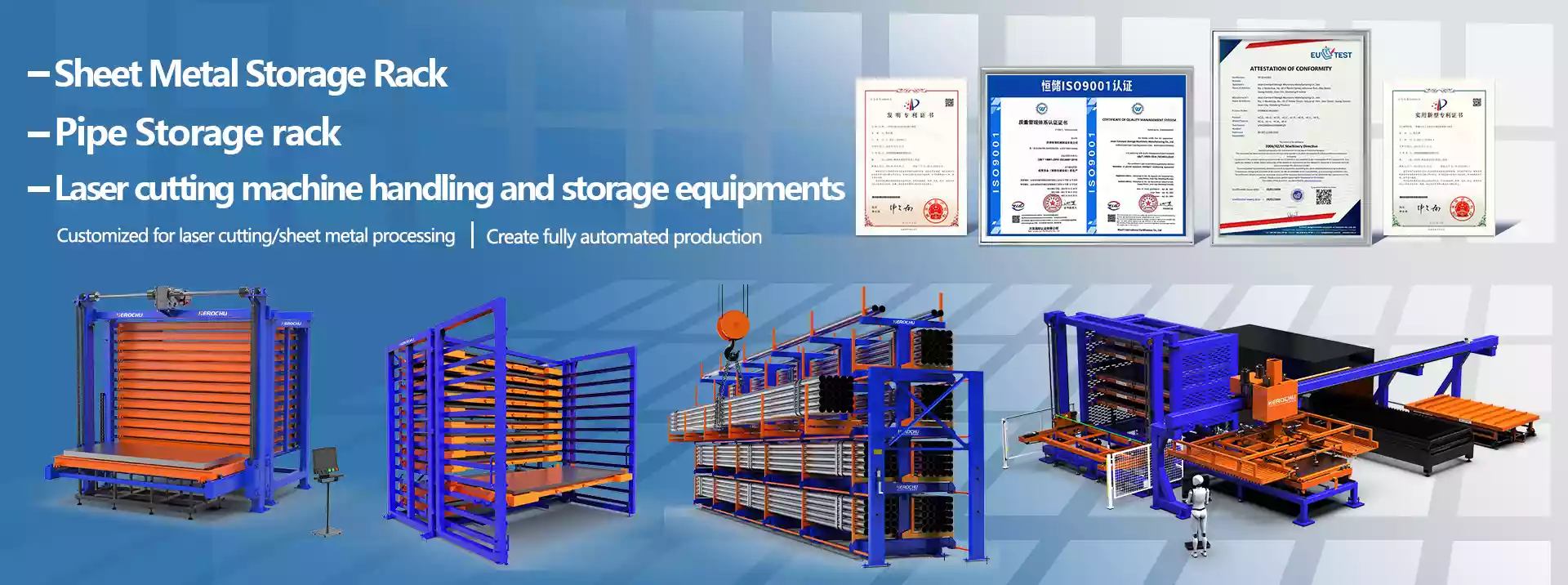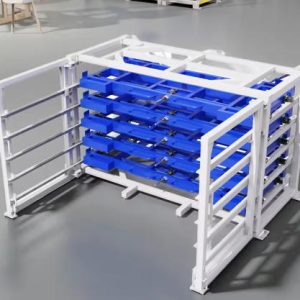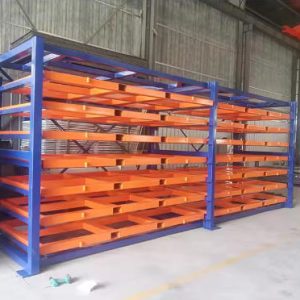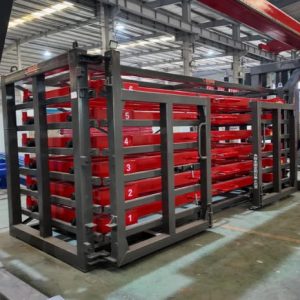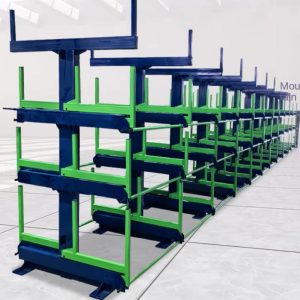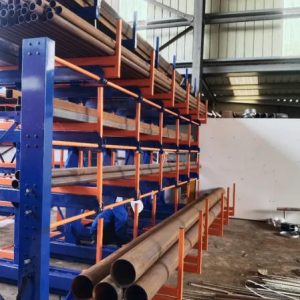Herochu Drawer Raw material storage racks – stop shuffling steel, start pulling profit
Every minute your laser, plasma or punch press waits for plate is a minute you will never invoice. Yet in most shops the “short” delay is baked into the culture: climb over pallets, hook four sheets with a magnet, discover the wrong gauge, restack, repeat. Herochu Drawer Raw material storage racks erase that ritual by giving every single sheet its own sliding shelf. One operator, one crank handle, one clean pull—and 5 000 lbs of steel glides into the crane path ready for pickup. No pyramid dismantling, no scratched surfaces, no guessing games. Starting at four thousand two hundred dollars for a four-level starter bay, each frame is CE-, UE- and ISO 9001-certified and can be widened, heightened or mobilised as your mix of materials mutates.
The concept is deliberately low-tech on the surface: a heavy-weld column, laser-punched uprights and a drawer chassis riding on sealed bearings. Look closer and you will find tolerances held to half a millimetre, induction-hardened guide rods rated for 100 000 cycles at full load and a mechanical crank with a 12:1 gear ratio that lets a 60 kg technician move 2.5 t of plate without breaking stride. The drawer face locks automatically when closed, so vibration from passing forklifts cannot nudge it open; an electromechanical interlock prevents lift movement while any drawer is extended. Simple, yes—but simple the way a Swiss vise is simple: every radius and every pin has one job and does it forever.
100 % selectivity is the headline, yet the story is written in cubic metres. A typical ground pile of mixed sheet consumes roughly 1.2 m² per tonne and demands a 4 m aisle so a crane can hover above. The same tonne inside a Herochu drawer tower needs 0.25 m² and only 1.1 m aisle width, because the load travels to the crane instead of the crane travelling to the load. Multiply the saving by twenty bundles and you have just handed the plant manager 70 % of his floor back—enough floor space to drop in a second laser or an extra deburring cell without pouring new concrete.
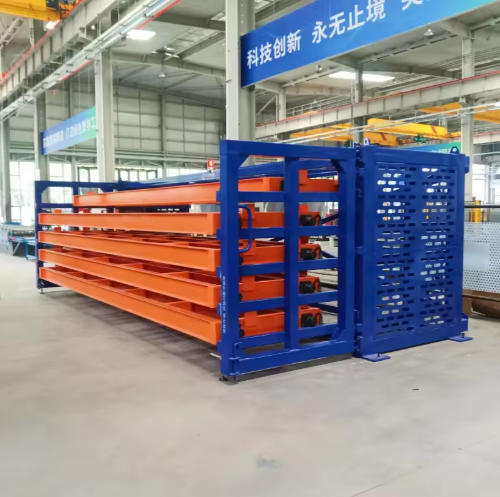
Capacity is not a marketing guess. Each drawer is statically proof-loaded to 1.25 times its rating and dynamically cycle-tested under full load for 2 000 repetitions before the design is released. Standard arms carry 3 t; heavy-series arms carry 4.5 t and can be mixed on the same column so 1 mm shim stock and 40 mm wear plate live side-by-side without over-building half the rack. Drawer height adjusts on a 75 mm pitch, letting you store four levels of 200 mm plate nests today and eight levels of 100 mm aluminium tomorrow. The only tool required is a pin punch; the only downtime is the five minutes it takes to drink the coffee you no longer spend hunting for material.
Safety auditors like the system because it removes variables. The operator works from the aisle floor—no climbing on piles, no leaning into a stack that can slip. The drawer presents the load at a constant 900 mm above grade, the sweet spot for most vacuum lifters and magnetic beams. A perimeter light curtain can be added to freeze all motion if someone steps inside the drawer envelope, while an overload clutch in the crank prevents hernia-level torque when an operator gets ambitious. The result is a dramatic drop in near-miss reports and a corresponding dip in insurance premiums that often pays for the rack in its first year.
Material protection is engineered, not hoped for. Because each sheet is cradled on its own support fingers, there is no metal-on-metal scuffing during retrieval. Optional UHMW plastic caps or felt-lined saddles keep polished stainless mirror-bright and painted coil stock scratch-free. For high-value aerospace or architectural grades we can add a low-voltage earthing strap that prevents static build-up during dry winter months, eliminating the tiny arc burns that show up only after powder coating. The drawer face itself acts as a shield against airborne dust and grinding sparks, so the top sheet of yesterday’s batch is still pristine when the night shift rolls it out twelve hours later.
Integration with automation is plug-and-play rather than pray-and-hope. Every tower leaves the factory with an Ethernet/IP port, Modbus TCP and a simple REST API. Connect to your ERP and the rack reports which drawer contains the 2 mm 304 stainless remnant, how many kilos are left and when the last piece was removed. Pair with a robot-mounted vacuum lifter and the machine can request drawer #6, wait for the “position confirmed” signal, pick the top sheet and close the drawer—all without waking the forklift driver. The same API lets you build a simple phone app: scan the job traveler, watch the correct drawer glow green, pull, load, cut. Training time for new hires drops from days to minutes.
Installation follows a strict modular script. Columns arrive in knock-down form, nested like Russian dolls to protect the precision-milled guide channels. Bases and braces bolt together with grade 8.8 hardware torqued to 180 Nm—no on-site welding, no special anchors in most jurisdictions. A two-bay starter can be standing upright in ninety minutes using two people and one socket set. We provide a laser-level template that shows exactly where to drill the floor holes; miss the mark by 5 mm and the base plate’s slotted holes forgive you. Should you relocate, the same bolts come out, the rack travels and the concrete is left with only six plug holes you can fill with epoxy before the new tenant moves in.
Maintenance is visual and almost nil. Open the drawer, glance at the guide rods: if they shine, they are fine. A sealed bearing block greased at the factory typically runs 50 000 cycles before it asks for a two-minute shot of lithium. Should an arm ever be damaged by a rogue forklift, it unbolts and a replacement ships the same day—no need to scrap an entire section. Because the drawer face carries the serial number, ordering parts is as simple as texting a photo to our support desk; the cloud system already knows the build date, load history and which bearings were installed.
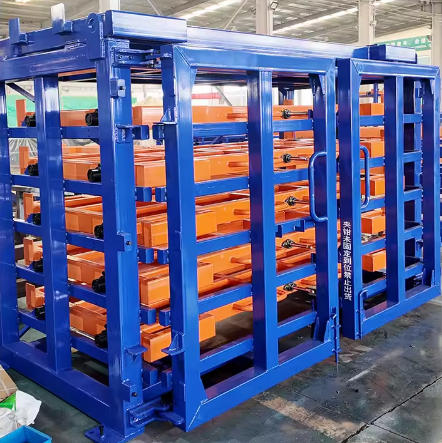
Sustainability is baked into the design. Steel is infinitely recyclable, but the smartest carbon footprint is the one you never make. By reclaiming floor space you postpone—or eliminate—the need for a new building, new concrete, new lighting and new HVAC. By protecting surface quality you reduce the scrap rate, saving the ore, energy and transport emissions tied to replacement material. And because the rack is modular, it can follow you to a new facility instead of being cut up for scrap. One customer has moved the same Herochu drawers three times in fifteen years; the only new parts were fresh anchor bolts and a can of touch-up paint.
Return on investment is not a spreadsheet fantasy. Take a shop that runs two shifts and retrieves material twelve times per shift. Saving eight minutes per pull equals 160 minutes a day of recovered machine time. At a conservative shop rate of eighty dollars an hour, that is two hundred and thirteen dollars a day, or fifty-three thousand dollars a year—enough to buy twelve additional bays and still pocket profit in year one. Factor in halved labour, 30 % less scrap and the sudden availability of floor space and the pay-back period drops to a single financial quarter.
Herochu Drawer Raw material storage racks are not a glamorous purchase; they are a silent partner that never calls in sick, never scratches a sheet and never forgets where it put the 4 mm 316L you need for the rush job. Bolt it together, load it once, crank the handle and watch your machines finally eat at the speed they were designed for.

